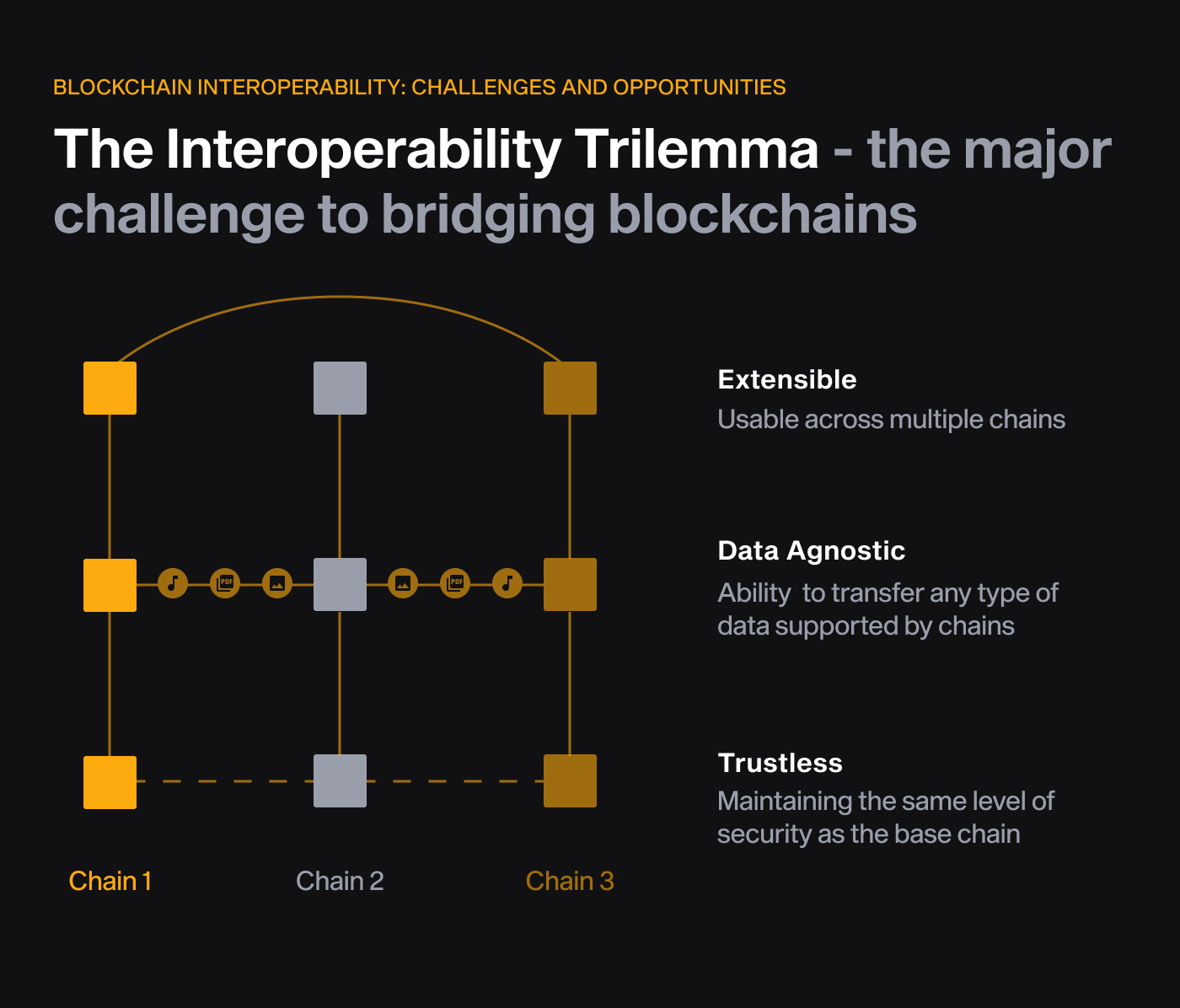Blockchain Interoperability: Bridging Different Networks

- Understanding Blockchain Interoperability
- The Importance of Bridging Different Networks
- Challenges in Achieving Blockchain Interoperability
- Key Technologies Enabling Cross-Chain Communication
- Real-World Applications of Blockchain Interoperability
- Future Trends in the Evolution of Interconnected Blockchains
Understanding Blockchain Interoperability
Blockchain interoperability refers to the ability of different blockchain networks to communicate and share information with each other. This is crucial for the widespread adoption of blockchain technology as it allows for seamless transactions and data transfer between various networks.
One of the key challenges in achieving blockchain interoperability is the lack of standardization across different networks. Each blockchain platform has its own set of rules and protocols, making it difficult for them to communicate with each other. However, there are several projects and initiatives underway to address this issue and create a more interconnected blockchain ecosystem.
One approach to achieving blockchain interoperability is through the use of cross-chain communication protocols. These protocols act as bridges between different blockchain networks, allowing them to exchange information and assets. Examples of such protocols include Polkadot, Cosmos, and Aion, which aim to create a decentralized internet of blockchains.
Another method for achieving blockchain interoperability is through the use of sidechains and atomic swaps. Sidechains are separate blockchains that are connected to the main blockchain, allowing for the transfer of assets between them. Atomic swaps, on the other hand, enable users to exchange one cryptocurrency for another without the need for a centralized exchange.
Overall, blockchain interoperability is essential for the future of blockchain technology. By enabling different networks to communicate and share information, we can create a more efficient and interconnected ecosystem that benefits users and businesses alike. As the technology continues to evolve, we can expect to see more innovative solutions for achieving blockchain interoperability and bridging the gap between different networks.
The Importance of Bridging Different Networks
Interoperability is crucial in the world of blockchain technology as it allows different networks to communicate and share information seamlessly. By bridging various blockchain networks, users can access a wider range of services and applications, ultimately enhancing the overall user experience.
When different networks are able to connect and interact with each other, it opens up a world of possibilities for developers and users alike. This interoperability enables the transfer of assets and data across multiple blockchains, creating a more efficient and interconnected ecosystem.
Furthermore, bridging different networks can help to address scalability issues that often plague individual blockchains. By allowing networks to work together, the burden of processing transactions and storing data can be distributed more evenly, leading to improved performance and scalability.
Overall, the importance of bridging different networks in blockchain technology cannot be overstated. It not only enhances the functionality and usability of blockchain applications but also paves the way for a more interconnected and efficient blockchain ecosystem.
Challenges in Achieving Blockchain Interoperability
One of the main challenges in achieving blockchain interoperability is the lack of standardized protocols across different networks. Each blockchain platform typically operates on its own set of rules and protocols, making it difficult for them to communicate and share data seamlessly. This lack of standardization hinders the ability to establish connections between disparate blockchains, limiting the overall interoperability of the technology.
Another obstacle to achieving blockchain interoperability is the issue of scalability. As more blockchains are created and adopted for various use cases, the need to scale the technology to support a growing number of transactions becomes increasingly important. However, scaling solutions such as increasing block sizes or implementing off-chain solutions can introduce complexities that make it challenging to achieve interoperability between different blockchain networks.
Furthermore, the governance structures of blockchain networks can also pose challenges to achieving interoperability. Each blockchain platform is governed by its own set of rules and decision-making processes, which can vary significantly between networks. This lack of standardized governance can create barriers to collaboration and coordination between different blockchains, hindering efforts to achieve seamless interoperability.
Key Technologies Enabling Cross-Chain Communication
One of the key technologies enabling cross-chain communication is **atomic swaps**. Atomic swaps allow for the direct exchange of cryptocurrencies across different blockchains without the need for a trusted third party. This technology ensures that transactions are secure and efficient, promoting interoperability between various blockchain networks.
Another important technology in facilitating cross-chain communication is **sidechains**. Sidechains are separate blockchains that are connected to the main blockchain, allowing for assets to be transferred between them. This enables scalability and flexibility in blockchain networks, enhancing their interoperability.
**Smart contracts** also play a crucial role in enabling cross-chain communication. Smart contracts are self-executing contracts with the terms of the agreement directly written into code. By utilizing smart contracts, different blockchains can interact with each other seamlessly, enabling the transfer of assets and data across multiple networks.
**Interoperability protocols** are essential for ensuring smooth communication between different blockchains. These protocols establish standards and rules for how blockchains can interact with each other, promoting seamless cross-chain transactions. By adhering to interoperability protocols, blockchain networks can overcome barriers and work together effectively.
In conclusion, the advancement of key technologies such as atomic swaps, sidechains, smart contracts, and interoperability protocols is crucial for bridging different blockchain networks and enabling cross-chain communication. These technologies pave the way for a more interconnected and efficient blockchain ecosystem, driving innovation and collaboration across various networks.
Real-World Applications of Blockchain Interoperability
Blockchain interoperability has a wide range of real-world applications that can revolutionize various industries. By enabling different blockchain networks to communicate and share data seamlessly, interoperability opens up new possibilities for innovation and collaboration. Some of the key applications of blockchain interoperability include:
- **Cross-Chain Asset Transfers**: One of the most significant use cases of blockchain interoperability is the ability to transfer assets across different blockchains. This can streamline processes such as cross-border payments, asset tokenization, and decentralized exchanges.
- **Decentralized Finance (DeFi)**: Interoperability allows different DeFi platforms to interact with each other, creating a more interconnected and efficient financial ecosystem. This can lead to improved liquidity, lower transaction costs, and increased accessibility to financial services.
- **Supply Chain Management**: Blockchain interoperability can enhance transparency and traceability in supply chains by enabling the seamless exchange of data between multiple parties. This can help improve efficiency, reduce fraud, and ensure compliance with regulations.
- **Identity Management**: Interoperable blockchain networks can facilitate secure and verifiable identity management solutions. This can be particularly useful in scenarios such as voting systems, healthcare records, and digital identity verification.
- **Smart Contracts**: Interoperability can enable smart contracts to operate across different blockchain platforms, expanding their functionality and use cases. This can lead to increased automation, improved trust, and enhanced security in various industries.
Overall, blockchain interoperability has the potential to transform how data and value are exchanged in the digital economy. By bridging different networks and enabling seamless communication, interoperability can unlock new opportunities for innovation and collaboration across various sectors.
Future Trends in the Evolution of Interconnected Blockchains
As blockchain technology continues to evolve, the future trends in the evolution of interconnected blockchains are becoming increasingly important. Interoperability between different blockchain networks is crucial for enabling seamless communication and data transfer across various platforms. This trend is expected to drive innovation and collaboration in the blockchain space, leading to the development of more efficient and scalable solutions.
One of the key trends in the evolution of interconnected blockchains is the rise of cross-chain communication protocols. These protocols allow different blockchains to communicate with each other, enabling the transfer of assets and data across multiple networks. By facilitating interoperability, cross-chain communication protocols are paving the way for a more connected and integrated blockchain ecosystem.
Another important trend in the evolution of interconnected blockchains is the development of interoperability standards. These standards define the rules and protocols for how different blockchains can interact with each other, ensuring seamless communication and data transfer. By establishing common standards, interoperability becomes more achievable, leading to greater efficiency and collaboration in the blockchain space.
Furthermore, the emergence of interoperability platforms is shaping the future of interconnected blockchains. These platforms act as bridges between different blockchain networks, facilitating the exchange of assets and data. By providing a unified interface for interacting with multiple blockchains, interoperability platforms are streamlining the process of cross-chain communication and collaboration.



